Allpoint ATMs and Foreign Debit Card: fee-free or not?
One of the largest interbank networks in the US, Allpoint, is known for its zero surcharge-fee withdrawals. While customers of participating institutions enjoy no fees, the situation is less appealing for out-of-network cards issued by foreign banks.
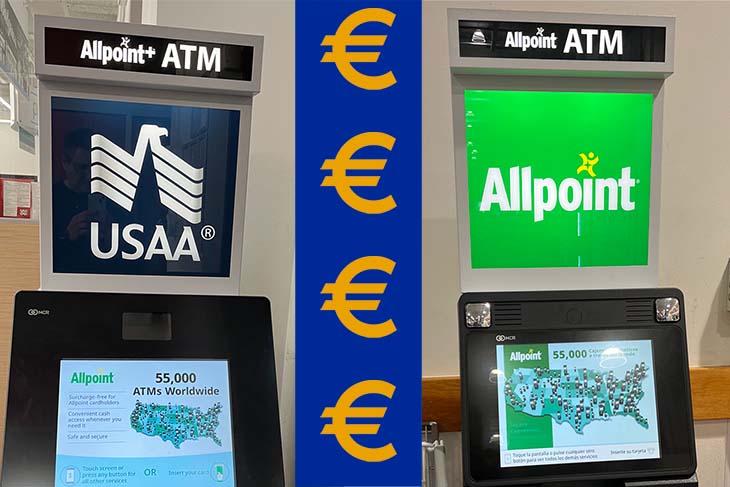
Photo: Big4Credit
No, you can not withdraw euros from Allpoint ATMs, as our cover may suggest. But you can withdraw dollars from your foreign debit card at Allpoint when you are in America. This might be convenient if you are traveling in the US or living under temporary protection here.
Allpoint is advertised as one of the largest ATM networks around the globe without ATM surcharge fees for cash withdrawals. And it is excellent, only if your card happens to be issued by the US-based bank participating in Allpoint. What about out-of-network banks, especially foreign banks that are not part of Allpoint? Do Allpoint ATMs charge a fee if you want to use your foreign debit card to make cash withdrawals?
We ran a test and tried to withdraw cash from a foreign out-of-network debit card at multiple Allpoint ATMs. To our surprise, the results varied substantially. While all ATMs have been located at different merchants, none of them offered us a fee-free cash withdrawal.
What is Allpoint?
Allpoint is an ATM network that operates more than 55,000 ATMs worldwide. In the US, Allpoint ATMs are often conveniently located at the leading national merchants, e.g., CVS, Target, and Walgreens, and major convenience stores such as Circle K and Speedway.
Allpoint is an interbank ATM network comprised of about 1100 financial institutions. It is especially handy for travelers traveling abroad. Allpoint is headquartered in Atlanta, Georgia, and operates in the US, Mexico, Canada, the United Kingdom, Australia, and New Zealand.
For the in-the-network debit cards issued by participating institutions, Allpoint offers fee-free ATMs, which have no surcharge fee for cash withdrawals.
Is no-fee cash withdrawal possible at Allpoint for foreign debit cards issued by out-of-network banks?
Unfortunately, no! No ATM from Allpoint, which we have tried, offers a zero-fee cash withdrawal. And we have tried quite a few major locations in Atlanta, Georgia including Target, Walgreens, CVS, Costco and Kroger. Using a foreign debit card issued by an out-of-network bank always resulted in a fee. This surcharge fee varied from $2.5 to $6.95 per withdrawal, while the maximum cash limit was in the range of $200 to $400.
Who has the lowest ATM withdrawal fee?
Winners: Kroger’s ATM offers you the lowest absolute surcharge fee of $2.5 if you need to withdraw $300 or less. If you need to withdraw a larger amount, Target’s ATM would be a better option, charging you $3.25 for a $400 cash withdrawal.
Losers: While Walgreens has one of the largest withdrawal limits of $400 (as big as Target), its surcharge fee of $6.95 hits hard. Yet Costco appears to be the worst among all. It offers the highest surcharge fee of $6.95 as well as the lowest withdrawal limit among all, $200.
Middle Ground: CVS has one of the lowest surcharge fees, at $3.00 and a decent withdrawal limit of $300. Given the ubiquitous presence of CVS stores in the US, it wins in this category and can be regarded as the “to-go” choice in most cases.
The results are ordered by surcharge fee, from lowest to highest,
Kroger - $2.50 fee, $300 limit.
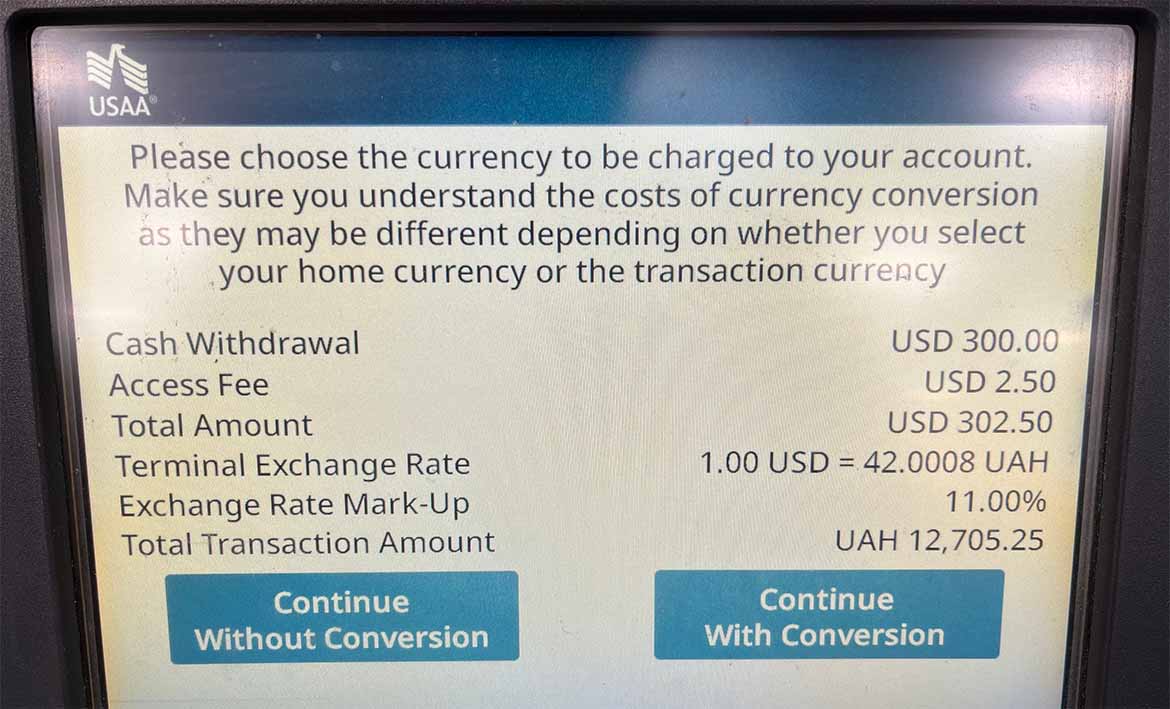
Kroger ATM screen
CVS - $3.00 fee, $300 limit.
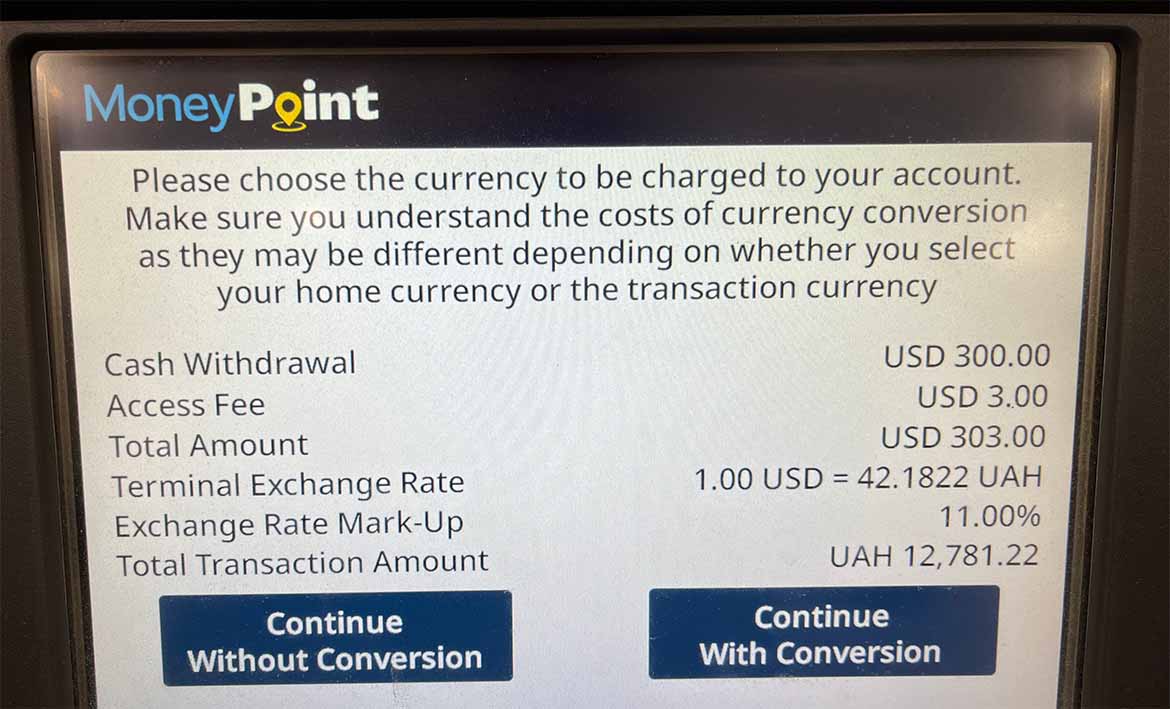
CVS ATM screen
Target - $3.25 fee, $400 limit.
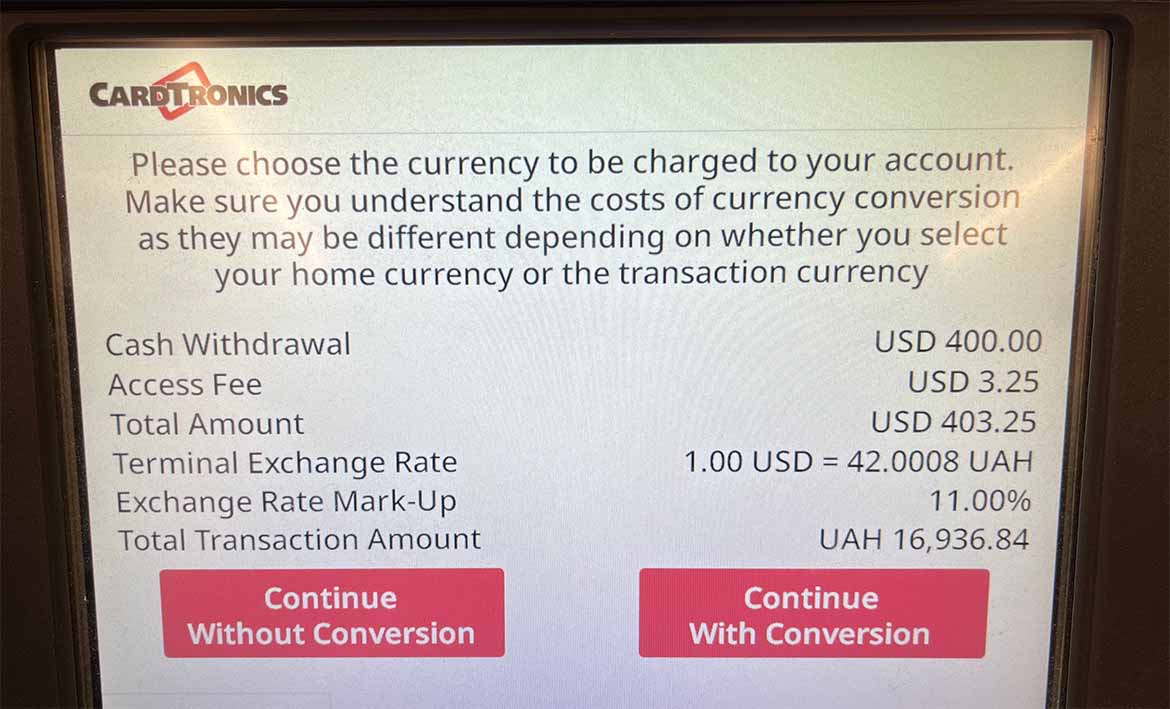
Target ATM screen
Walgreens - $6.95 fee, $400 limit.
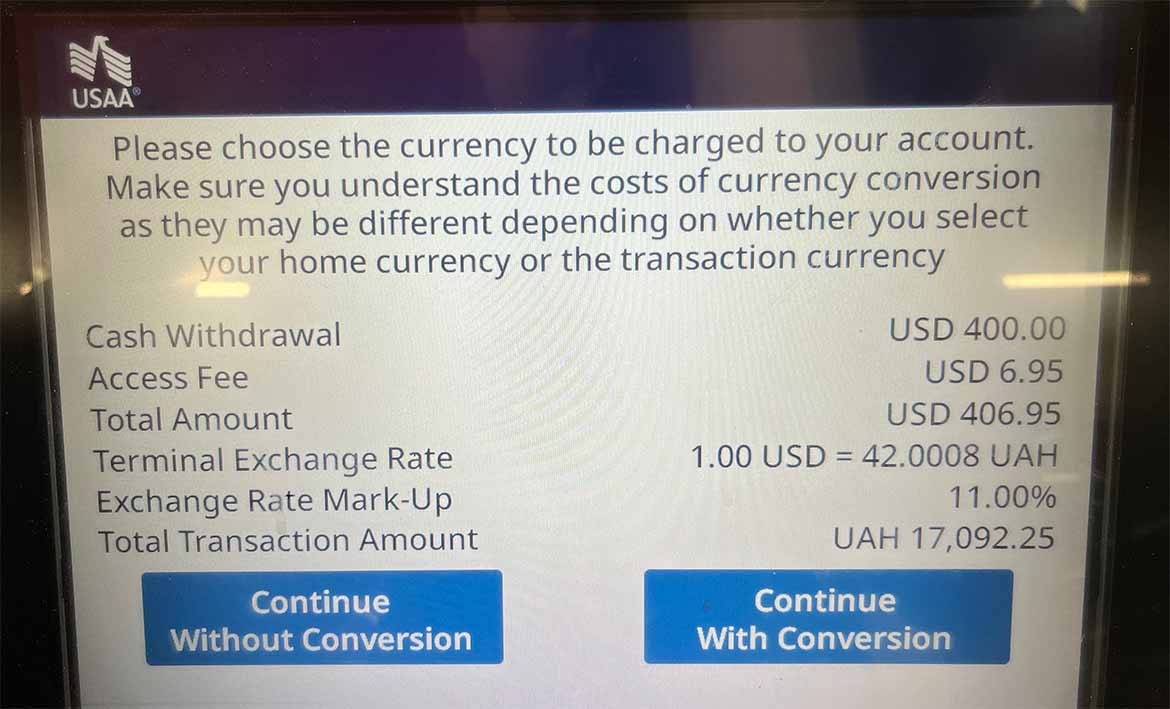
Walgreens ATM screen
Costco - $6.95 fee, $200 limit.
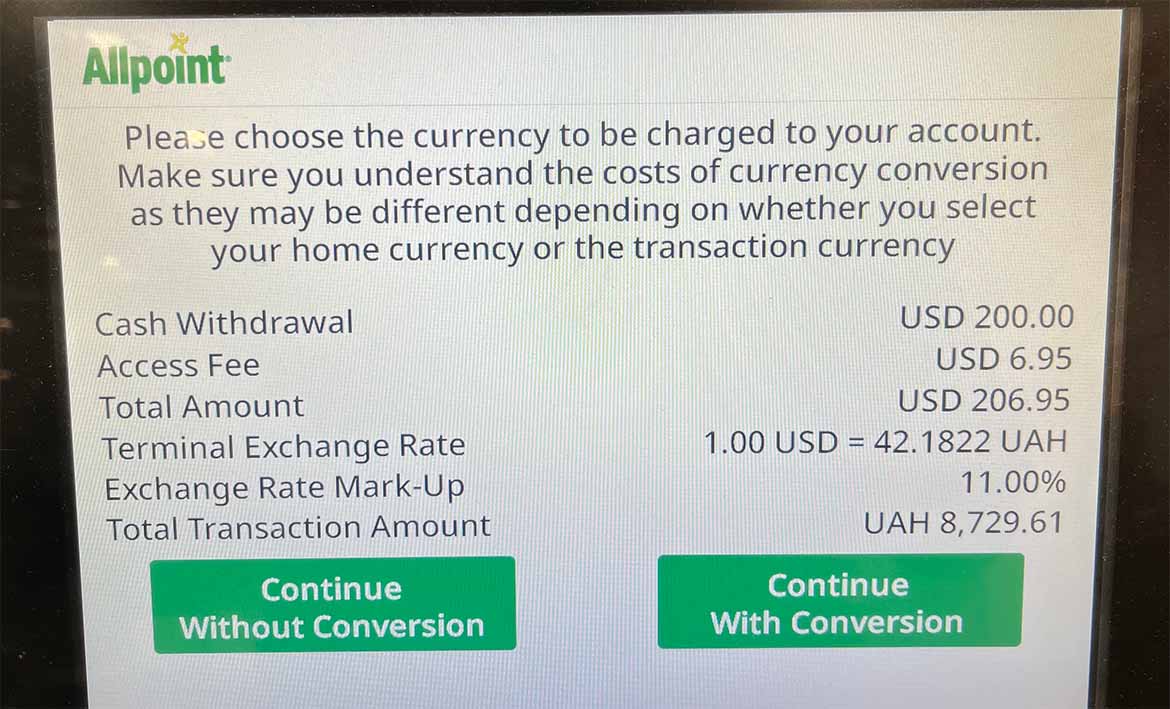
Costco ATM screen
ATM surcharge fees and limits
Here is the one-stop list of surcharge fees and maximum withdrawal limits for the Allpoint ATMs from our study,
- Kroger: $2.50 surcharge fee, $300 limit
- CVS: $3.00 surcharge fee, $300 limit
- Target: $3.25 surcharge fee, $400 limit
- Walgreens: $6.95 surcharge fee, $400 limit
- Costco: $6.95 surcharge fee, $200 limit
Pay attention(!) - the Exchange Rate Mark-up
Beware! Beware! Beware!
All Allpoint ATMs we tried have a very high exchange rate mark-up fee of 11%! And this is a lot.
Technically, the Exchange Rate Mark-up is not a fee. But effectively, for our purposes, you can consider it as the one. What matters here is not so much the formal definition but the effect it has on you.
You really need to understand what the exhange rate mark-up is and pay attention to it. If you make a wrong choice during your cash withdrawal, it may leave you with significantly less cash than you initially thought. But knowledge is the key, and you can avoid a costly mistake by making an informed decision.
Typically, most foreign debit cards are issued in the official currency of their home country. It can be euros (EUR) for cards issued in Eurozone, Britsh pound sterlings (GBP) in the UK, Swiss francs (CHF) in Switzerland, or yuan (CNY) in China. So when you try to withdraw US dollars (USD) from your foreign debit card account, a currency exchange is involved in the transaction to convert your card currency to US dollars.
The exchange rate mark-up is a percentage added to the real exchange rate when a currency conversion occurs during the cash withdrawal.
Depending on where exactly the currency conversion occurs - whether on the side of your foreign bank or the ATM provider (which is Allpoint in our case) - you might be hit with very different mark-up rates, from as low as virtually 0% to a full-blown 11%.
To make an informed decision and choose wisely where you want the currency conversion to occur, you need to compare your bank foreign transaction fee with the ATM’s exchange rate mark-up.
First, determine how much your bank that issued your card would charge you for the currency exchange on its side. Usually, this information can be found in the foreign transaction fee section of the card’s Terms & Conditions (T&C). You can also contact your bank directly, either by calling over the phone or through a website. In our case, the foreign transaction fee was listed in the T&C and is equal to 2%.
Second, find out about the provider’s exchange rate mark-up on the ATM’s screen right before proceeding with one of the two conversion options. In the case of the Allpoint network, all ATMs we have tried posted the exchange rate mark-up equal to 11%.
If you press “Continue Without Conversion,” then the currency exchange will occur on the side of your foreign bank. When you choose “Continue With Conversion,” the ATM’s provider will do the currency exchange on its side.
In our case, the 2% foreign transaction fee was much more appealing than the 11% of the exchange rate mark-up rate offered by Allpoint ATMs. So it is wise to “Continue Without Conversion” as it will save us 9% of the transaction amount in this case.
For example*, imagine we decided to withdraw $300 from our foreign debit card at CVS with the $3 surcharge fee, then
- Continue Without Conversion - Total fees ≈ $3 + $300 * 2% = 9$
- Continue With Conversion - Total fees ≈ $3 + $300 * 11% = 36$
The difference in fees between the two ATM options above is stark, i.e., $9 vs. $36. Which one do you prefer to go with? We have chosen “Continue Without Conversion” and didn’t regret it.
So, it literally pays to be mindful and aware!
* Note: These calculations are not exact (!), but they are very close enough and make it easy to make a fast back-of-the-envelope estimation.
What are the alternatives to Allpoint ATMs?
A good alternative to the Allpoint ATM network could be big national banks with a wide ATM network, such as Bank of America, Chase or Wells Fargo. Cash withdrawal limits tend to be anywhere from $600 to $1000, depending on the bank, with surcharge fees in the range of $3 to $4 per withdrawal. But remember the markup rate - be aware of your bank’s foreign transaction fees and how they stack up against the Allpoint exchange rate mark-up. Make sure you select the less expensive currency conversion option on the ATM screen.
The easiest way to find an ATM closer to you is to use the ATM Locator services at the corresponding bank’s websites.
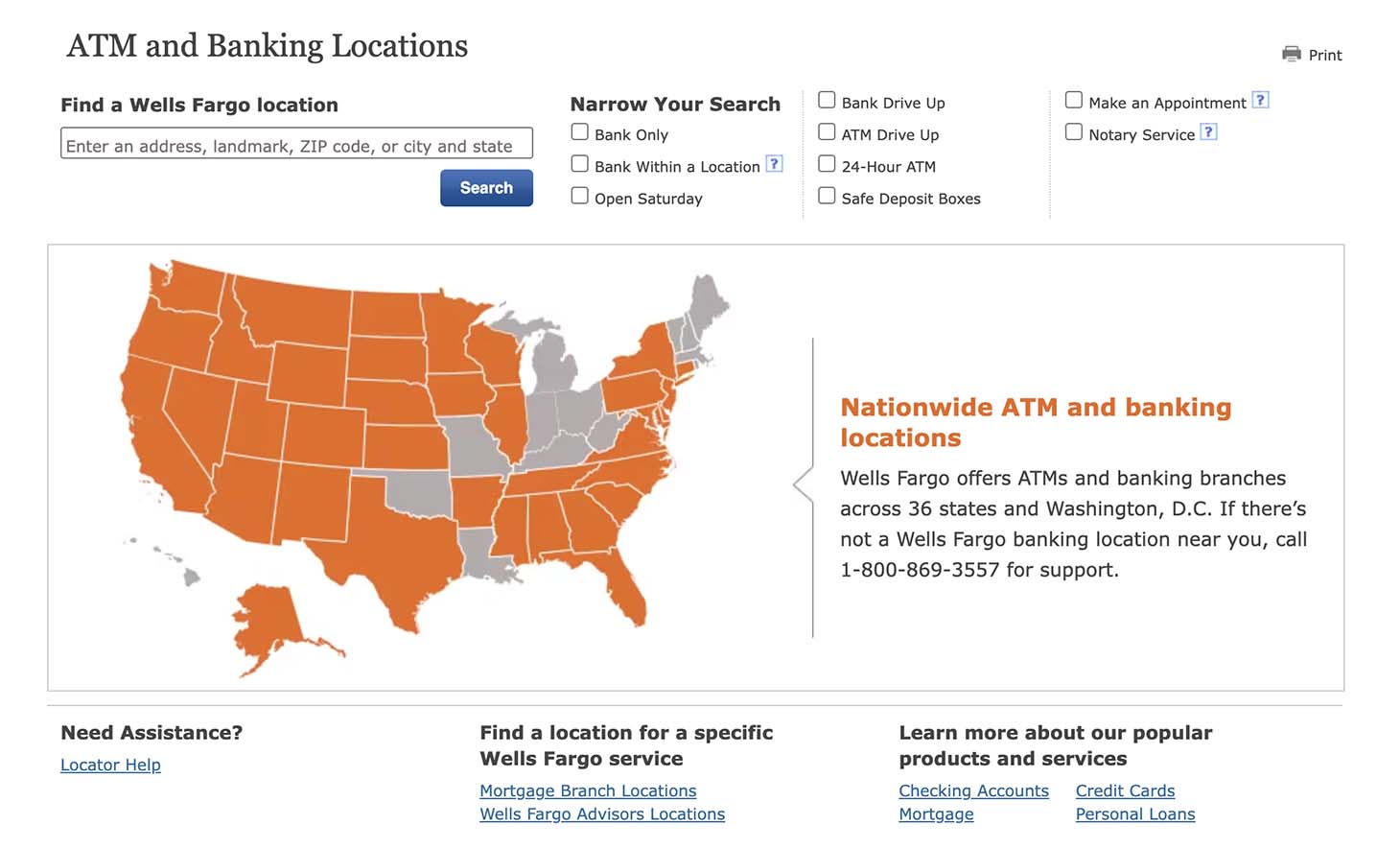
Wells Fargo ATM Locator service
The information in this post has been collected independently by big4credit.com.
